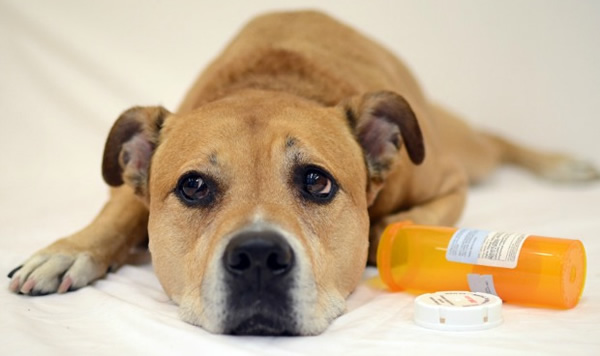40+ Helpful Tips to Pet-Proof Your Home & Keep Pets Safe

Hazards are all around your home. Your pet’s safety depends on you!
Companion animals don’t realize that anti-freeze, chocolate or moth balls are poisonous — they just think these toxic items taste great. And the kitchen and garage are full of delicious “treats” to get into.
Use these tips to help spot dangers to pets and take the right precautions!
- Household cleaners, furniture polishes, disinfectants, insecticides, fertilizers, perfumes and make-up can be dangerous to pets. Make sure cupboards and storage areas (such as your pantry or garage) containing these items are secure. A bored or determined pet can get into areas you wouldn’t expect!
- Anitfreeze tastes very sweet and pets, wildlife and children can’t resist taste-testing from a puddle in the garage or the driveway. Antifreeze poisoning can be deadly to pets and many don’t survive, even when getting to the vet right away. Look for antifreeze products that have been treated with bittering agents, making them a little safer (though not completely) for pets. Products such as Sierra Antifreeze contain non-toxic propylene glycol instead of ethylene glycol, making it safer for pets and wildlife.
- If you live in colder climates, rock salt (used on roads and driveways to melt ice and snow) can be highly toxic to pets. Make sure your pets’ paws are cleaned off after walks where they might come in contact with rock salt.
- Make sure the dishwasher, washing machine, dryer and oven are kept closed.
- Throw out plastic bags, aluminum foil and food wrappers. If swallowed, they can cause damage to a pet’s digestive tract or in some cases, cause shock and death.
- Make sure all fences are in good repair and gates are secure and locked.
- See that all medications are locked up. The sound of pills rattling in a plastic bottle might entice the pet to chew the bottle open.
- Remove candy or nuts from coffee tables or locations where a pet can reach them. Chocolate and other common foods are toxic to dogs and certain nuts can be dangerous as well.
- Keep areas where moth balls are used off limits to pets. Ingesting mothballs can cause moderate to life-threatening pesticide toxicity in cats and dogs.
- Check to see that any hobby supplies such as paints, glues, needles and thread, etc have been placed away from a curious pet’s reach.
- Electrical cords are like licorice to many pets, from cats to guinea pigs. Electrocution from chewing on an electrical cord is the single most common type of injury for household pets. By using products like CritterCord cord protectors, nasty-tasting Bitter Apple spray and by utilizing other creative electrical cord-safety methods, you can lower the risk of Fluffy gnawing on exposed cords.
- Double check that garbage cans and compost lids are secure. They might contain yummy surprises, many of which are life-threatening, such as chicken bones, foil or wax paper food wrappers, batteries (pets sometimes love to chew these!) and many more.
Prevent Ingestion-Related Accidents – Use Natural Products in Your Home
 Being responsible with the choices you make when considering what products and substances your bring into your home can help prevent many chemical-related accidents.
Being responsible with the choices you make when considering what products and substances your bring into your home can help prevent many chemical-related accidents.
One way to reduce poisonous, synthetic or toxic cleaning and disinfecting products from your home is to start using inexpensive, natural, homemade cleaning and disinfecting substitutions. Here is a huge, comprehensive list of safe, non-toxic formulas, techniques and products for cleaning and taking care of your home that are much safer for humans AND their critter companions!
Better SAFE than SORRY!
Please keep your pets safe and secure by preventing access to the many food, chemical and other dangers hiding in plain view in your home. One small ingested ‘treat’, chemical, or item can result in huge vet bills or worse. Your pets will thank you for your vigilance!
Additional Resources:
26 Common Items that Are Dangerous to Cats and Dogs
11 Ways to (Stylishly) Pet-Proof Your Home

